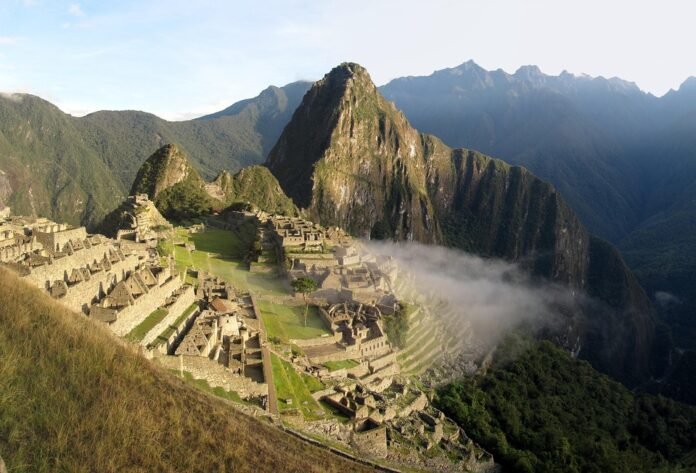Of course. Here is an article about Environment and Climate, written to be accessible, informative, and compelling for a general audience.
Our Planet’s Fever: Understanding the Climate Crisis and Our Path Forward
For generations, the Earth has sent us whispers of change. The rustle of a new wind pattern, the slight retreat of a winter glacier. Today, those whispers have become a roar. From raging wildfires to unprecedented floods, our planet is signaling a profound distress. This is the reality of our changing climate, the defining challenge of our time, and a direct consequence of our relationship with the environment.
To navigate this challenge, we must first understand the two core, interconnected concepts: our environment and our climate.
The House and The Thermostat: Environment vs. Climate
Think of the environment as the house we all live in. It encompasses everything around us—the air we breathe, the water we drink, the forests, oceans, soils, and the intricate web of life, or biodiversity, that inhabits these spaces. It’s our immediate, tangible world.
The climate, on the other hand, is the house’s long-term heating and cooling system. It isn’t today’s weather (a single rainy afternoon), but the long-term, predictable patterns of weather over decades and centuries. For millennia, this system has kept Earth’s temperature stable, allowing life as we know it to flourish.
The problem is, we’ve broken the thermostat.
The Diagnosis: What’s Causing the Fever?
The Earth is kept warm by a natural phenomenon called the greenhouse effect. Certain gases in our atmosphere, like carbon dioxide (CO2), act like a blanket, trapping some of the sun’s heat and keeping our planet habitable. Without this blanket, Earth would be a frozen, lifeless rock.
For the last 150 years, however, human activities have been adding extra layers to this blanket, thickening it to a dangerous degree. The primary drivers are:
- Burning Fossil Fuels: The combustion of coal, oil, and natural gas for electricity, transportation, and industry releases enormous amounts of CO2 into the atmosphere. This is the single largest contributor to global warming.
- Deforestation: Forests are crucial “carbon sinks,” absorbing CO2 from the atmosphere. When we cut down and burn forests for agriculture or development, we not only lose this vital absorption capacity but also release all the stored carbon back into the air.
- Agriculture: Methane, a potent greenhouse gas, is released from livestock digestion and manure. Nitrous oxide, another powerful warming gas, is a byproduct of synthetic fertilizers used in modern farming.
- Industrial Processes: Manufacturing, cement production, and waste decomposition in landfills all contribute to greenhouse gas emissions.
This overload of heat-trapping gases is causing our planet’s average temperature to rise at an unprecedented rate. This is global warming, and it’s the engine driving climate change.
The Symptoms: The Impacts of a Warming World
A feverish planet exhibits clear and alarming symptoms that are disrupting environments and lives across the globe:
- Extreme Weather Events: Heatwaves are becoming hotter, longer, and more frequent. Hurricanes and typhoons are growing more intense, fueled by warmer ocean waters. Droughts parch farmlands, while in other regions, extreme rainfall leads to catastrophic flooding.
- Rising Sea Levels: As the planet warms, two things happen: glaciers and polar ice sheets melt, adding water to the oceans, and the ocean water itself expands as it heats up (thermal expansion). This combination is causing sea levels to rise, threatening coastal communities, economies, and entire island nations.
- Ecosystem Collapse and Biodiversity Loss: Coral reefs, the vibrant “rainforests of the sea,” are bleaching and dying due to warmer, more acidic oceans. Species are struggling to adapt, leading to mass migrations and a wave of extinctions that threatens the stability of ecosystems we rely on for food, clean water, and medicine.
- Threats to Human Health and Security: Climate change exacerbates food and water shortages, increases the spread of infectious diseases, and creates “climate refugees”—people forced to flee their homes due to drought, flooding, or other environmental disasters.
The Treatment Plan: Forging a Path Forward
The diagnosis is clear, and the symptoms are severe. But despair is not a strategy. The good news is that we have the knowledge, technology, and ingenuity to forge a sustainable path forward. The treatment requires a coordinated effort on every level of society.
1. Global and Governmental Action:
Governments must lead the way by implementing bold policies. This includes setting ambitious emissions reduction targets (like those in the Paris Agreement), investing massively in renewable energy like solar and wind, putting a price on carbon pollution, protecting and restoring natural habitats, and funding green innovation.
2. Corporate Responsibility:
Industries and corporations have a critical role to play. This means transitioning away from fossil fuels, redesigning products for sustainability (the circular economy), cleaning up supply chains, and investing in technologies that reduce their environmental footprint.
3. Individual and Community Action:
Our collective individual actions create powerful ripples of change. We can contribute by:
- Conserving Energy: Reducing electricity use at home and work.
- Rethinking Transportation: Walking, biking, using public transit, or switching to electric vehicles.
- Making Conscious Choices: Reducing meat consumption (especially red meat), buying local to reduce food miles, and avoiding single-use plastics and fast fashion.
- Using Our Voice: Voting for leaders who prioritize climate action, supporting businesses with strong environmental ethics, and talking to friends and family about the importance of this issue.
Our Shared Future
The climate crisis is not a distant problem for a future generation; it is here, now. It is an environmental issue, an economic issue, a social justice issue, and a moral issue.
Healing our planet’s fever will be the great work of the 21st century. It will require ambition, innovation, and a fundamental shift in how we power our world and value our environment. The task is monumental, but humanity has a proven track record of rising to meet immense challenges. Our planet, our only home, is waiting for us to act. Our shared future depends on it.

